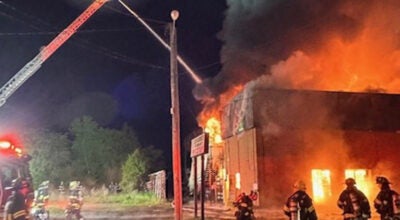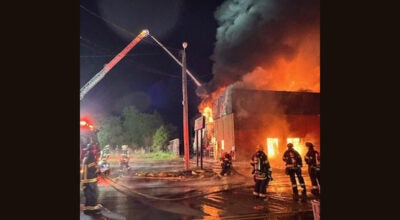City looks to expand broadband access
Published 6:00 pm Friday, October 2, 2020
|
Getting your Trinity Audio player ready...
|
City informational technology officials have outlined ways Suffolk can increase broadband access, but noted there are challenges in getting the whole city fully connected.
Among its efforts, the city has joined other South Hampton Roads cities in forming the Southside Network Authority and is in the design stage of developing a regional connectivity fiber ring. It has also leveraged assets across the city to provide more wi-fi for students in virtual learning, and it has applied for a grant to expand broadband in rural areas, starting in Whaleyville.
Through the Hampton Roads Planning District Commission, the authority now has a new executive director and is at the 30% design stage for the regional connectivity fiber ring, with CTC Technology & Energy performing the work. Each city has a voting member on the board and an alternate member.
Ken Beam, city director of informational technology, said the firm has been working with the five cities to determine where they want the fiber ring to go. The initial map has the ring going from Virginia Beach in the east, to Kenyon Road by Paul D. Camp Community College in Suffolk to the west.
At the northern end of the map near Interstate 664, Beam said the city is working with the consultant on the project to move the ring over on U.S. Route 17 to Shoulders Hill Road.
“That’ll provide the city with the benefit of having fiber ready to go down Harbour View Boulevard when we build a new fire station/police station in that area,” Beam said during a Sept. 16 City Council meeting.
It would also bring it to Police Station 2 and Fire Station 5 on Bridge Road, where there is no fiber now, as well as Creekside Elementary School and the North Suffolk Public Library.
City Manager Patrick Roberts — whose last day was Oct. 2 — said that when such fiber rings have been built elsewhere on the East Coast, it has attracted private investment that had not previously been in the market.
Noting the school division’s challenges in providing wi-fi for students in virtual learning, Beam noted that the city’s IT department, traffic engineering and Suffolk Public Schools have been working cooperatively to expand the city-owned fiber network.
Beam said as a result of the collaboration, public wi-fi is available for students to use at nearly every city facility. Wi-fi access points have also been installed at the city’s recreation centers.
“We’ll continue to help the schools in any way that we can,” Beam said.
Beam displayed a map outlining locations where there is fiber from the school division, traffic engineering, city IT and from Charter Communications.
“You can see where it goes, and where there’s huge gaps where there’s no service for anybody,” Beam said. “So the regional fiber ring, we’re hoping, will help us get that middle mile where they can connect to it and take it into neighborhoods.”
However, it doesn’t mean the city will be getting into the broadband business.
“We’re not going to be providing internet to the citizens of this city,” Beam said. “We’re trying to put something in place where the vendor can utilize that middle mile and start branching off from there and providing internet service and television service to city residents.”
Regina Chandler, assistant IT director, noted the city’s partnership with Charter in seeking a $2.5 million grant through the Virginia Telecommunications Initiative, or VATI, grant program, administered by the state Department of Housing and Community Development, to connect the Vicksburg Road, Southwestern Boulevard, Manning Farms and Whaleyville areas of the city. The grant would cover 80% of the cost, with a 20% match of just over $630,000 from Charter. The grant application notes that it would service 18 businesses and nearly 400 residences, most of those in Whaleyville. The city is expected to learn in late November whether it will receive the grant.
Chandler said Whaleyville was chosen for the first phase of the program due to the number of residents not currently served and based on Charter’s analysis of its drive routes.
“We found that we could leverage the potential of providing a majority of the households with available connectivity,” Chandler said.
Existing broadband providers can challenge the grant application, but Chandler said she does not foresee challenges because Charter is the city’s lone provider in the proposed project area.
Councilman Tim Johnson noted that in the Holy Neck borough that he represents, Charter has a ring around it and is not serving that community. While acknowledging the grant, if approved, would be good for Whaleyville, it doesn’t help the Holy Neck area in the near term.
“It seems as though you can come off of that network that they already have there and serve the community,” Johnson said, “so we’re going to ignore Holy Neck and go to Whaleyville and start (something) brand new. … We don’t understand why Charter isn’t taking care of our communities.”
Chandler noted that there is only $19 million total available for the VATI grants across the state.
“What Charter did is review the whole rural area and they found that we could knock out more homes in that area first and we would consider that as Phase 1 of this project. Next year, there will be an opportunity to go after the remaining areas. … Whaleyville was really the shot that we could get more bang for our buck.”
She said they would continue to apply for the grant in subsequent years until all the rural areas of the city are connected.
The project, if approved, could take anywhere from eight months along Southwest Boulevard and Manning Farms, to 12 months along Vicksburg Road and 22 months in the Whaleyville area.
“I don’t discount what Mr. Johnson said about what they have in Holland … but Whaleyville has nothing,” said Councilman Roger Fawcett. “So we’ve got to get something down there to those folks.”
Chandler said if the grant is successful, once the fiber is put in, Charter would own it, which she noted was an enticement for it to partner with the city. Roberts drew a distinction between the multi-government owned fiber that would come through the regional initiative and the Charter-owned fiber that would come if the VATI grant is successful.
She said if the grant is not successful, the city would have to consider a major Capital Improvement Plan to try and connect the rural areas to broadband service.
Councilman MIke Duman said the regional broadband initiative would make it more likely for a competitor to come into the city to provide broadband services, as Charter is currently the only provider in the city.
Beam said the city has offered space on its five public safety radio system towers — which cover the entire city — to put Verizon or AT&T antennas and provide cell service, with that being weak in rural areas of the city. However, “we’ve just had nobody take us up on that offer,” said Beam, who noted difficulties in working with Verizon.
Beam said 5G service is coming to the city, and that there are already two such antennas in the downtown area, but at this point, that is limited.
City Attorney Helivi Holland outlined the cable franchise agreement with Charter. She said local governments have a franchise agreement with a particular provider or providers. That gives the providers the ability to provide a service in a locality.
She noted the city’s history with Charter, which has also operated in the city under the Falcon and Spectrum names. In 2008 and 2016, Holland said requests for proposals were issued and got no responses. Charter is operating under a Feb. 16, 2009 extension of its 2008 agreement.
Norfolk, too, only has one cable company under a franchise agreement.
Holland said multiple people working for the city have reached out to companies inviting them to come into the city to provide residential services, but their responses have been a consistent no.
“Clearly, it’s not an easy topic, and (there’s) a lot that’s gone into it,” said Mayor Linda Johnson, “and we just have to keep on working to get what we need for our citizens.”






